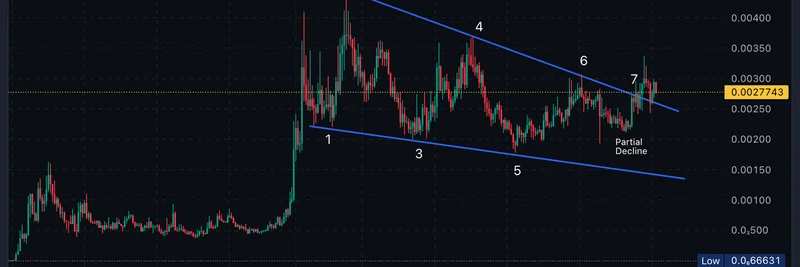If you're keeping an eye on the evolving world of cryptocurrencies, especially those pushing the boundaries of scalability and decentralization, the recent tweet from BSCNews about Kaspa's $KAS token is worth a closer look. They shared a comprehensive analysis that dives into what makes Kaspa stand out in a crowded market. Let's break it down in simple terms, so even if you're new to blockchain, you can follow along.
What is Kaspa and Its Native Token $KAS?
Kaspa is a cryptocurrency that launched back in November 2021, but it's not your typical blockchain project. Instead of the usual linear blockchain structure—like what Bitcoin uses—Kaspa employs something called a blockDAG, which stands for Block Directed Acyclic Graph. Think of it as a web of blocks rather than a straight chain, allowing multiple blocks to be processed at the same time. This setup makes Kaspa incredibly fast and scalable while keeping things decentralized.
The native token, $KAS, is what powers this network. It's used for mining rewards, securing the network through proof-of-work (PoW), and handling transactions. Unlike many projects that have pre-mined tokens or allocated big chunks to founders, Kaspa had a fair launch: no pre-sales, no investor perks—just pure mining from day one. This means every $KAS in circulation has been earned by miners contributing to the network's security.
The Technology Behind Kaspa: BlockDAG Explained
At the heart of Kaspa is its blockDAG architecture. Traditional blockchains add one block at a time, which can lead to bottlenecks and slower transaction speeds. BlockDAG changes the game by allowing parallel processing. This results in super-fast block times—Kaspa can generate blocks in seconds—without sacrificing security.
The mining algorithm, kHeavyHash, is designed to be energy-efficient, making it more accessible for miners using various hardware, from CPUs to ASICs (specialized mining chips). As of now, the network boasts a hashrate of over 1,200 TH/s, which is a measure of the computational power securing the chain. High hashrate means it's tough for bad actors to attack the network.
Tokenomics: Supply, Distribution, and Emission Schedule
Tokenomics is basically the economics of a token—how it's distributed, supplied, and how new tokens are created. For $KAS, the max supply is capped at 28.7 billion tokens, creating scarcity over time. Impressively, over 90% of that supply (about 25.88 billion) is already in circulation as of March 2025, thanks to mining.
The emission schedule is predictable and deflationary. Starting with 500 $KAS per second in rewards, it decreases monthly by a factor of (1/2)^(1/12), which is like a smooth halving every year. By May 2029, rewards will drop to around 3.44 $KAS per second, and it'll keep tapering off until 2037. This gradual reduction helps control inflation and could drive value as demand grows.
Pros here include the fair distribution—no team reserves means less risk of dumps from insiders. On the flip side, the large total supply might make it seem less scarce compared to something like Bitcoin's 21 million cap. Also, as rewards decrease, miners will rely more on transaction fees, which could be a challenge if adoption doesn't keep up.
Use Cases and Community Impact
While Kaspa is primarily a Layer 1 (L1) network focused on speed and security, its potential extends to various applications. The high throughput makes it ideal for decentralized finance (DeFi), non-fungible tokens (NFTs), and even meme tokens that need quick, cheap transactions. Although smart contracts aren't fully live yet, the community is buzzing about future developments, like Rust-based smart contracts, which could open doors for more complex dApps.
The community-driven aspect is huge—governance is in the hands of users and miners, not a central team. This aligns with the crypto ethos of decentralization. With a market cap around $1.9 billion and a spot in the top 50 on CoinMarketCap, Kaspa's showing real traction.
Why This Matters for Meme Token Enthusiasts
Even though Kaspa itself isn't a meme token, its scalable infrastructure could be a game-changer for meme coin projects. Imagine launching a viral meme on a network that handles thousands of transactions per second without the gas fees choking your hype. Projects like this provide the backbone for the fun, community-driven tokens we love at Meme Insider. Keeping tabs on L1 innovations like Kaspa helps you spot where the next big meme wave might hit.
If you're intrigued, check out the full analysis on BSCNews or follow @BSCNews on X for more updates. What's your take on Kaspa—bullish or waiting for more? Drop your thoughts in the comments!
Final Thoughts
Kaspa's $KAS token represents a fresh take on PoW cryptocurrencies, blending speed, fairness, and sustainability. As the crypto landscape evolves, projects like this remind us why blockchain tech is so exciting. Stay informed, and who knows? It might inspire the next meme token phenomenon.


